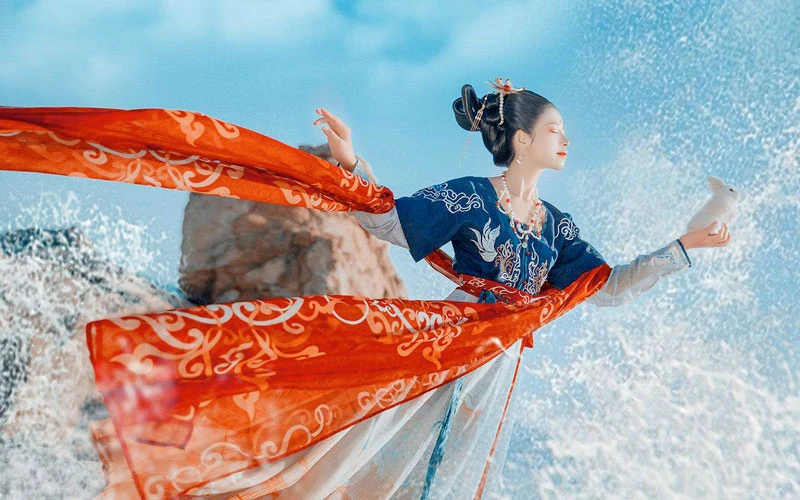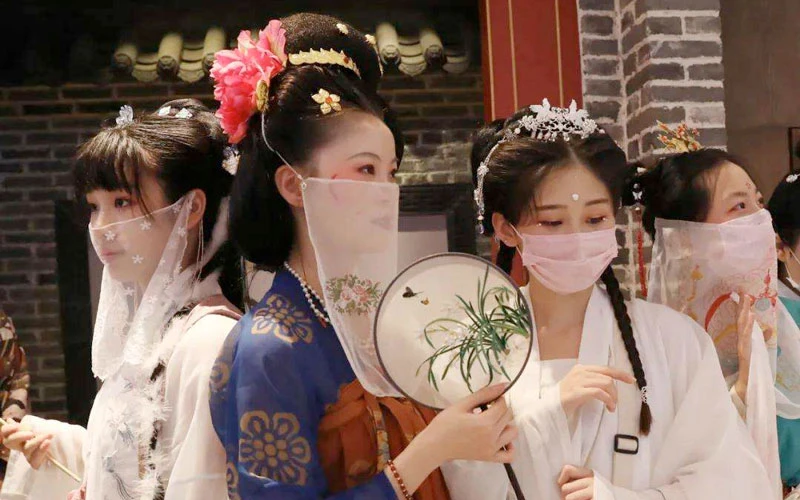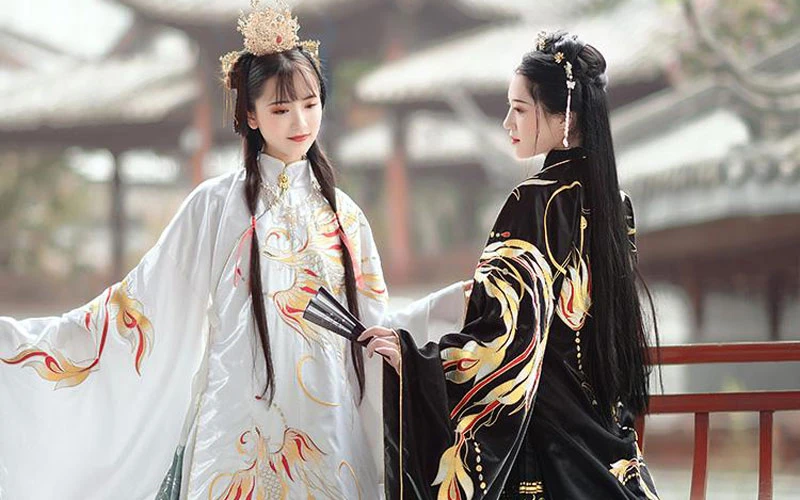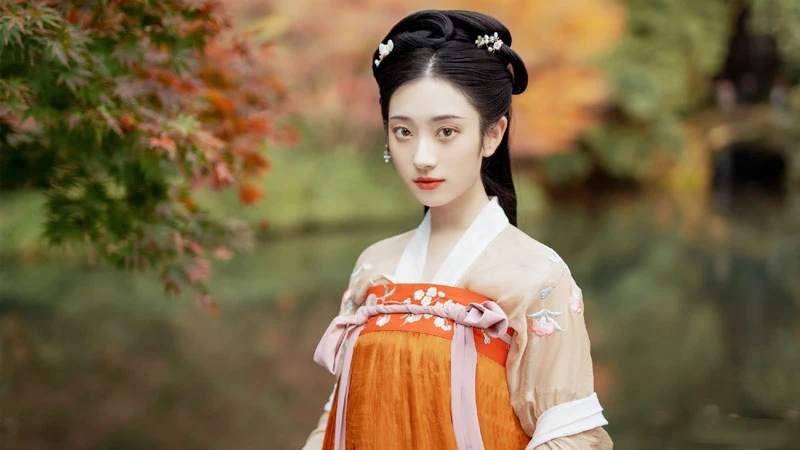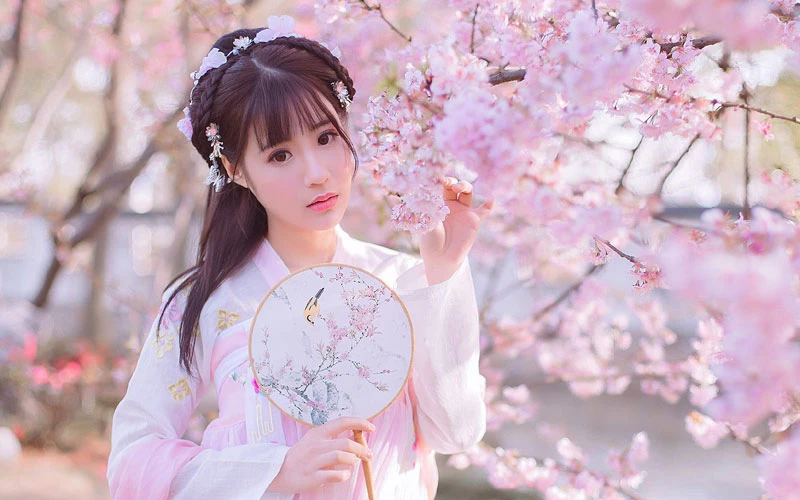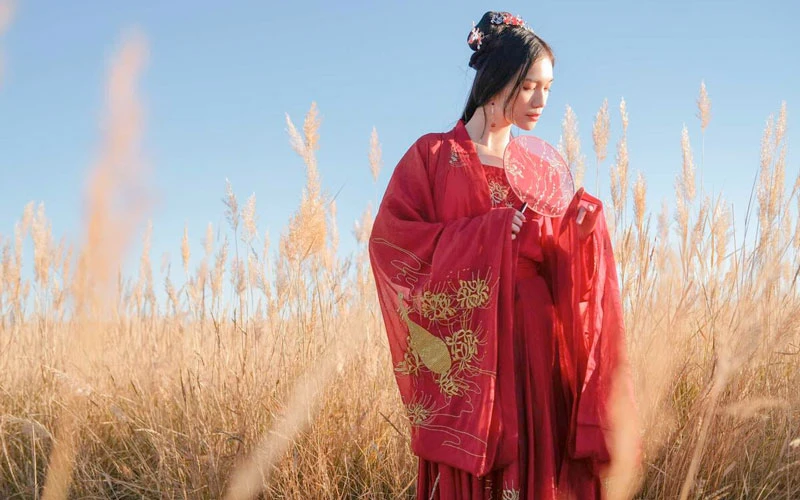One of the most intriguing aspects of human history is the evolution of clothes and outfits. Every country has its own distinct traditional attire. Individual traditions and cultures might be identified, allowing citizens to be distinguished from others.
Traditional Chinese apparel and dress is a time-honored heritage in a country known for its excellent silk production. China was the globe’s first country to raise silkworms and produce silk weaving techniques. Archaeologists claim that Chinese people have been weaving since the Neolithic era, which dates from 5000 to 6000 years ago. Sericulture and silk weaving were already well-developed in Chinese Civilization till 3,000 years ago.
Chinese apparel comes in a variety of styles and fits different events. On this large historical civilization land, we have classic Zhong shan suits, Cheongsam, and many more suits developed by cultural minorities. Each sort of garment has its own manufacturing and stitching procedures, as well as fortunate pattern exquisites. They were not just changing through time, but also radically changing in response to dynastic shifts or imperial decrees appointing a new ruler.
Traditional Chinese Clothing Characteristics
Unlike other nations’ clothes, Chinese apparel has a particular style and is deeply rooted in Chinese culture.
Embellished edgings, embellished ribbons, drape fabric or silks, designs on the sleeves, and belts were frequently added as adornment due to the general basic form and structure of Chinese Culture clothes. These various motifs become one of the distinguishing characteristics of traditional Chinese clothing.
1. Dark and Red
In Chinese cultural attires, darker colors were preferred over brighter ones, hence the primary hue of ritual clothes was usually black, with bright, complex tapestry motifs accenting. The common folks used lighter-colored garments more regularly for everyday usage.
Red is the color of choice for the majority of Chinese since it is associated with good fortune and is regarded as a lucky hue in Chinese Philosophy. When commemorating key holidays or milestones in their lives, such as a Chinese marriage ceremony, Chinese people choose to dress in red hanfu. When it comes to anything wonderful, such as throwing a feast for a birthday, achievement, or marriage, gold and silver hues are also preferred as décor colors since they represent riches and prosperity.
2. Four Seasons
Green denotes spring, red denotes summer, white denotes autumn, and black denotes winter, according to Mandarin. On the other hand, by legend, China had a well-developed system for coordinating, complementing, and contrasting bright and dark hues and tones in clothing.
3. Hanfu Patterns
Chinese people liked peonies and water lilies designs because they are emblems of prosperity and elegance. And, because traditional royal attire was adorned with dragons, mythical creatures and royal designs have become increasingly fashionable in China following the end of the federal system.
Traditional Chinese Clothes in Two Basic Styles
Traditional Chinese clothing was divided into two categories:
- Top-bottom clothing
- One-piece clothing
Top-bottom Clothing
The first kind of clothing described in Chinese records was top-bottom clothing, which consisted of a Yi (upper clothing) and a Chang (lower clothing). The yi would be any wide cross-collar dress carried by both genders with the right side draped over left, as well as the Shang is any skirt with a buckle dangling from the side used by both genders.
One-Piece Clothing
Shenyi was a one-piece garment that dates back to the ancient Zhou Dynasty (1046–221 BC). Despite being cut individually, the Yi and Shang were sewed together as one piece. All through China’s history, the shenyi has been widely embraced by many regimes. It was regarded as noble attire during the Han Dynasty (206 BC – 220 AD), and it continues to have a significant impact on current one-piece clothes.
Typical Traditional Chinese Dresses in History
Many minority groups in China, which is a multi-ethnic and ancient country, have their own unique culture. Parallel influences between various civilizations have led to history’s diverse patterns and textiles, resulting in a wide range of Chinese clothes with tremendous variety and splendor.
The interaction with the outside environment and China’s own dynasty customs has created and refined Chinese Traditional wear and clothes. Traditional Chinese clothing comes in four categories, all of which are still quite popular among Chinese people today:
1. Hanfu
The Hanfu is the earliest traditional Chinese outfit. It dates from the Han Dynasty (206 BC–220 AD), as the name implies. The Han Dynasty is referred to by the majority of Chinese people because it was the largest and most successful era in the history of China.
The Hanfu was created with convenience and comfort in mind. It had a right flap, a crossed collar, and a waistline. When Chinese people talk of Hanfu these days, they typically imply a long silky gown with loosened sleeves and a belt clip. Hanfu, on the other hand, is a broad phrase that encompasses a variety of garment styles from many dynasties.
Presently, Hanfu is only worn on rare days, like as cultural events and weddings, or by young females who wish to flaunt or pose for pictures.
2. Zhongshan Suit
The Mao suit is another name for the Zhongshan suit. It initially arose after the foundation of China in 1912, during the period of Sun Yat-sen. Leader Mao frequently accessorized this kind of clothing later on. As a result, it was dubbed a Mao suit in English.
The fundamental concept behind this outfit is to combine a Western-style suit with ancient Chinese garb. For its regular structure, ample look, grace, and steady impact, Zhongshan suits may be used on both official and informal situations.
Zhongshan suits come in a variety of colors, but the most common are white, black, grey, and blue. Colors are chosen by the people for various occasions.
3. Tangzhuang or Tang Suit
The Tang period, as the name implies, is the source of this garment. This outfit is referred to as a suit, yet it simply consists of one jacket. It is a form of traditional Chinese clothing that dates back to the Qing period. The upright collar and Chinese button ties distinguish it from a Magua (different style of jacket). Chinese people at home and overseas will don Tang suits to commemorate the Spring Event, which is the most important festival of the year.
Tang suits have evolved over time to fit the fashion needs of the youth of today. Colors, looks, fabrics, and embellishments differ, however the collar and studs remain the same. Whereas traditional Tangzhuang hues were black, navy blue, brown, and red, more vibrant colors like blue, green, pink, and purple are now available.
Tangzhuang’s traditional fabric is silk, but now cotton is used since it is more cost-effective and fluffy for coziness. With all of these adjustments, Tangzhuang would be more in tune with current aesthetics while yet maintaining its ancient character.
4. Qipao or Cheongsam
The Cheongsam & Qipao type of clothing is thought to have originated during the Qing Dynasty (17th–20th centuries), specifically in the manner of Manchu ladies. Both the phrases qipao and cheongsam refer to comparable Chinese-style clothing with an imperial neckline, and they are generally synonymous. While the names cheongsam and qipao are commonly interchanged (they refer to the same garment), their roots are different. Cheongsam is a Cantonese term that usually translates to “length gown,” while qipao is a Mandarin term that roughly translates to “flag robe.”
The cheongsam/qipao is an essential aspect of Chinese culture and custom. Any senior Chinese lady would remind you that this is elegant and dignified ritual attire that displays their ethnic and cultural standards. On the other hand, the younger generation sees this apparel as a fashion trend instead of an ethnical marker. This explains why they favor the modern qipao style. It helps individuals to stand out in a crowd while still fitting into their busy schedules.
Cheongsams today are available in a wide range of styles, materials, and patterns. While the costume has undergone modest adjustments, important distinguishing features including the side vents, mandarin collar, and uneven aperture have remained. The buttons and collar style of the qipao has indeed been retained because they represent ethnic history.
Conclusion
The inclusivity and legacy of Chinese culture are shown in ancient Chinese dress. Every time it enters a new period in history, it can keep its own distinctive look while also learning the benefits of many other clothing frameworks, extracting the spirit while removing the rubbish, and continuously optimizing and updating it, resulting in a large array of designs suitable for the general public and supported by people.
The vibrancy of traditional Chinese attire may be seen. Evermore fashionistas are investing their time and energy in improving classic garment designs these days.
We attempted to focus on the feature of traditional Chinese dresses in this article so that you could get a sense of their culture and traditions. We hope you find this information useful and that you are able to retrieve your preferred traditional Chinese dress.

